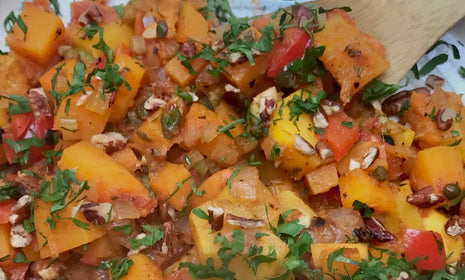Sprinkled over your favorite chicken piccata, chopped into a fresh steak tartare, or whipped into a beautiful tartar sauce for fried fish, you’ve likely come across the tiny yet mighty caper. Cured in salt, capers are a small green delicacy that is often misunderstood. When properly included in a dish, however, salted capers add tangy, briny and vegetal qualities with a pop of floral energy. In fact, once you’ve come to treasure these unique savory buds, you’ll find ways to include them into more recipes than you’d think, such as: chopped into a giardiniera salad, simmered into a savory sauce, or sprinkled onto your favorite pizza for a burst of flavor.

Grown in the wild throughout the Mediterranean basin, the best capers in the world come from Italy. To be more specific, the best capers in the world are capers that grow on the Aeolian island of Salina. Rising from the sapphire-blue depths of the Tyrrhenian Sea, Salina climbs skyward, her steep greenery-drenched pitches disappearing into a skirt of cloud cover. Fed by the mineral soils of its two volcanic peaks, the unique species of caper plant grown on Salina are endemic to the island and are Slow Food Presidio certified as they can be found nowhere else in the world.

In Leni, one of Salina’s most prolific caper growing municipalities, wild Italian capers spring from the cracks in the sidewalks.The plants climb up the rocky hillsides of its mountainous slopes, and blossom into dainty, tropical flowers when left unattended. Carefully hand picked before they bloom, however, the caper buds are harvested between May and August, and are promptly packed in salt to cure for the next month or two.

In late summer, plants that have been left to bloom produce juicy caper berries that are similarly harvested and cured in a salt brine. Filled with tiny seeds that pop in your mouth, salted capers harness a flavor profile that is fruitier, less intensely vegetal, and are often used to garnish antipasto platters or martinis.
Though undoubtedly delicious and easy to incorporate into any dish, you might not always have capers on hand or may find that the briny bud is not for everyone’s palate. In this case, there are plenty of substitutions that you can incorporate as alternative ingredients to capers. Finely chopped green olives make a wonderful substitution for capers, as does the combination of lemon zest, parsley and salt. Another excellent substitution for capers are very finely chopped pickles (savory not sweet), an extra dash of vinegar, or anchovies.





Be the first to comment